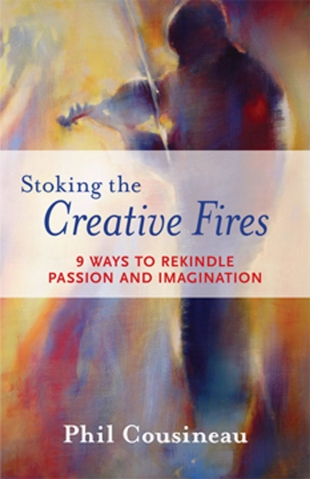"Many is the time I've been told that the single most useful advice I've given over the last twenty-five years is simply to read (or view) biographies, read (or view) biographies or autobiographies, such as Richard Ellman's study of W. B. Yeats, Reeder's study of Akhmatova, Leonardo's notebooks, Van Gogh's letters, Georgia O'Keeffe's memoirs, or films about the art spirit like My Brilliant Career, Immortal Beloved, and The Horse's Mouth, with Alec Guinness playing an eccentric genius painter. But augment these, I've long suggested, with parables about the mysterious way the creative fire connects us all. Here's one of my favorites:
A long time ago, the great Rabbi Baal Shem Tov saw catastrophe looming for his people. So he followed the ancient custom of the holy men of untold generations before him. He left the village where he lived and journeyed deep into the dark and dangerous forest. There, he lifted up his heart to God, lit a fire, and prayed. His words flared. A miracle occurred. His people were saved.
Years later, misfortune again threatened. Baal Shem Tov's disciple, Magid of Mezritch, heard the call to intercede with heaven and traveled deep into the forest. Once there, he was enshrouded with darkness and fear struck deep, like a sharp blade, in his heart. "Master of the Universe, listen to me," he cried. "I don't know how to light the fire, but I do know how to say the prayer." God listened and knew Magid's heart was righteous. Again, a miracle happened and the people were saved.
Time passed. The world turned. Chaos struck again. This time Magid's disciple, Rabbi Moshe Leib of Sasov, knew he must try to save his people. He followed the path deep into the forest and fell to his knees, humbled by a sudden realization. "Lord, I don't know how to light the fire. I've forgotten the prayer, but I do know this holy place in your sacred wood. This must be sufficient." God heard him and agreed. Miraculously, the people were saved once more.
More time passed. Again, disaster loomed. Sitting at home in an old bent chair, Rabbi Israel of Rizhyn knew in his heart what he had to do to overcome terrible times. He held his head in his hands and whispered. "I regret I'm unable to light the fire. I'm sorry I don't know the prayer. I feel a terrible sorrow that I can't even find the path left by the elders for me in the forest. All I can do is tell the story and I pray that this will be enough."
And it was enough. The old ones say God loves people because he loves a good story.
"What I love about this inexhaustibly rich tale is how it echoes the ancient belief that the world is held together by our stories. My close friend and film partner, the late Gary Rhine, in the traditional Jewish sense of tikkun, believed the heart of the world was broken, but that it could be healed through storytelling. He reassured me that it is through stories that we discover the key to our connection to the divine, to ourselves, to our tribe, our community. Nothing makes sense until you tell a story about it. Nothing saves your soul and your connection to your own past more than keeping the flame alive by telling stories about it. Nothing means until it's told in a story.
"In his epic ballad, 'Hallelujah,' Canadian poet and singer Leonard Cohen describes the 'secret chord' that David, 'the baffled king,' played on his lyre for God. What Cohen delivers in five glorious stanzas is a description of the need and the power to praise, even if life is, elliptically, a 'cold and broken hallelujah. It is the act that saves us — the singing, the praising, the creating. This is how we rekindle the fire in the forest. And it is why art is 'our unique survival tool,' as playwright David Mamet puts it. The mysterious power that artists, mystics, and teachers have tapped through the ages is the power to deliver the healing stories and images. Memory may be sacred, but it's forever fading, like disintegrating filmstrips. Sometimes it disappears altogether because, as the Irish say, memory is a merciful editor."
